Paid Media Calculator
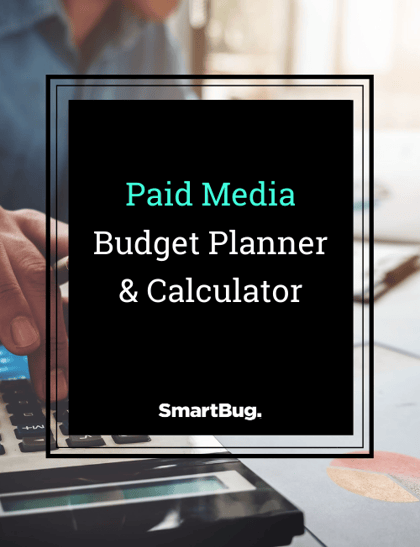
Paid media ads can grab an onlooker’s attention, drive traffic to your site, and fuel your broader marketing strategy. But deciding when and how to invest your business’s media dollars is never easy.
Put your paid media plan in motion by first determining how much you are willing to spend and the type and volume of activity your ads need to create to achieve your business goals.
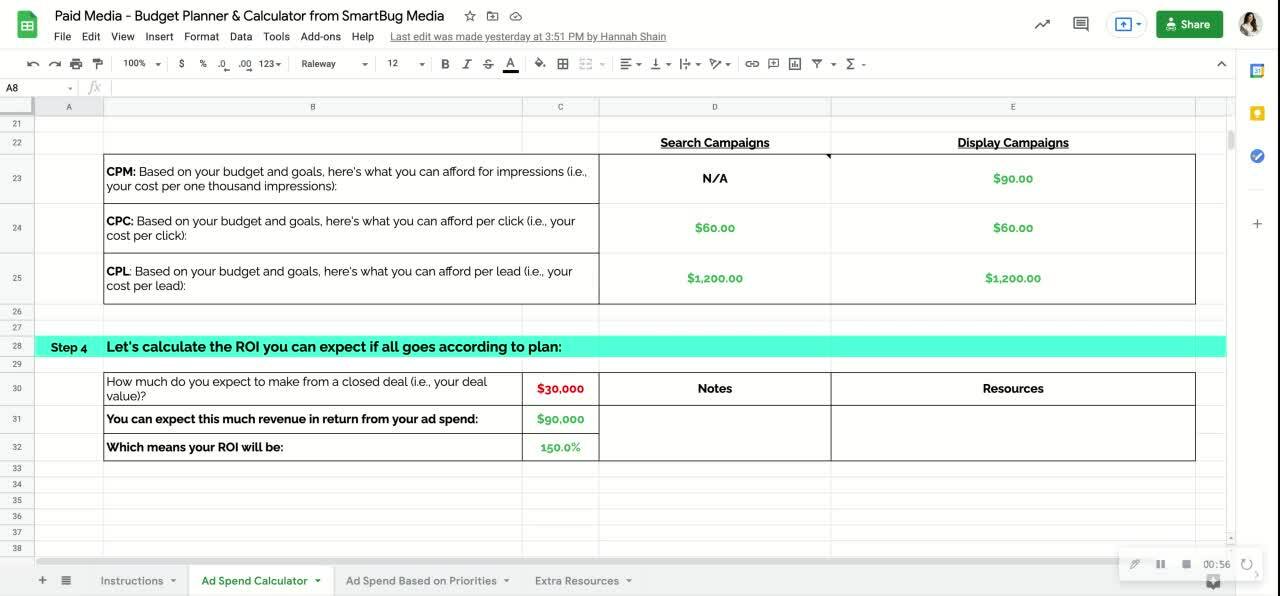
Our paid media budget planner and calculator will allow you to determine:
- The volume of activity your ads need to create to achieve your goal for new customers
- The costs associated with your conversions and clicks goals to validate your budget
- How much you could spend & the ROI you can expect if all goes according to plan
The paid media calculator lives on an easily editable spreadsheet you can copy and save for your own use. Create your own and share it with your team.
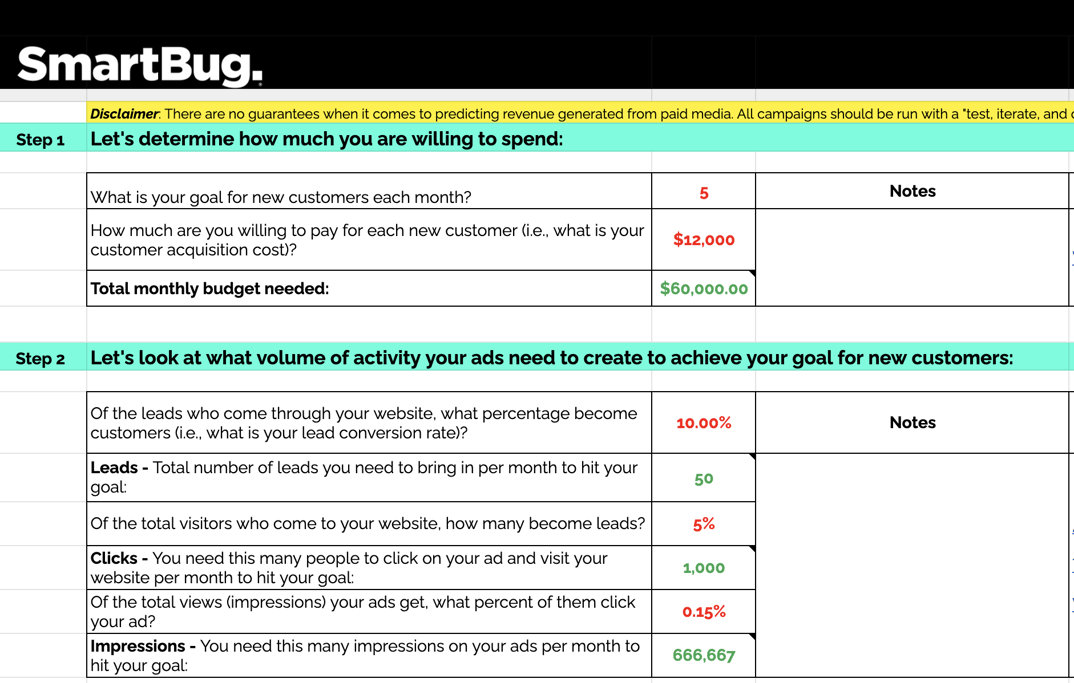
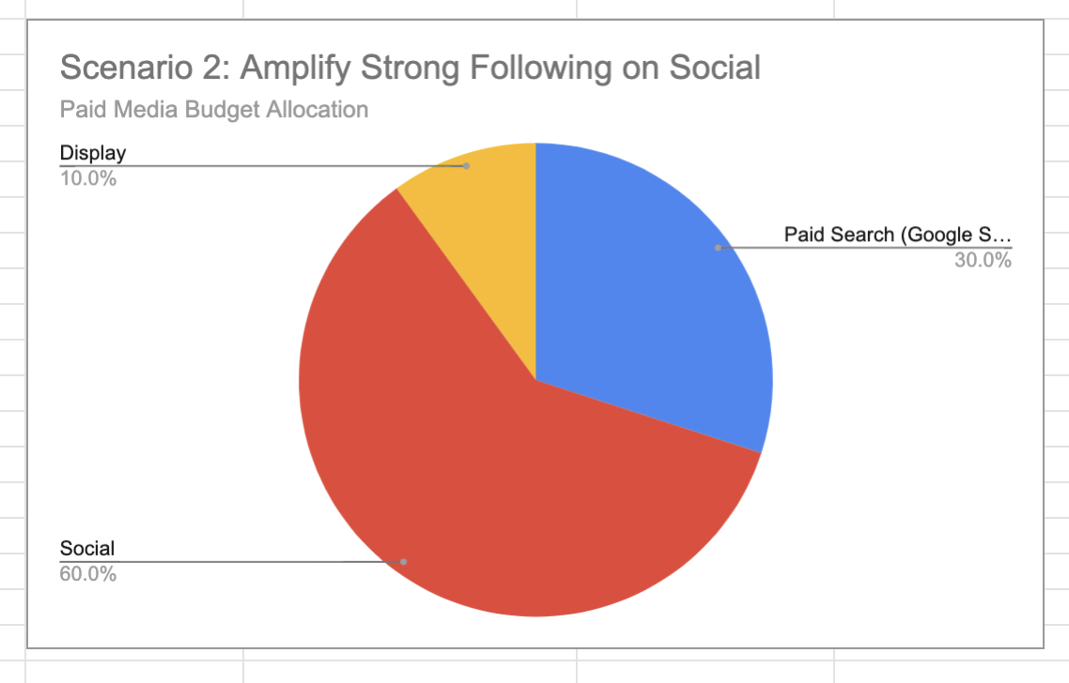
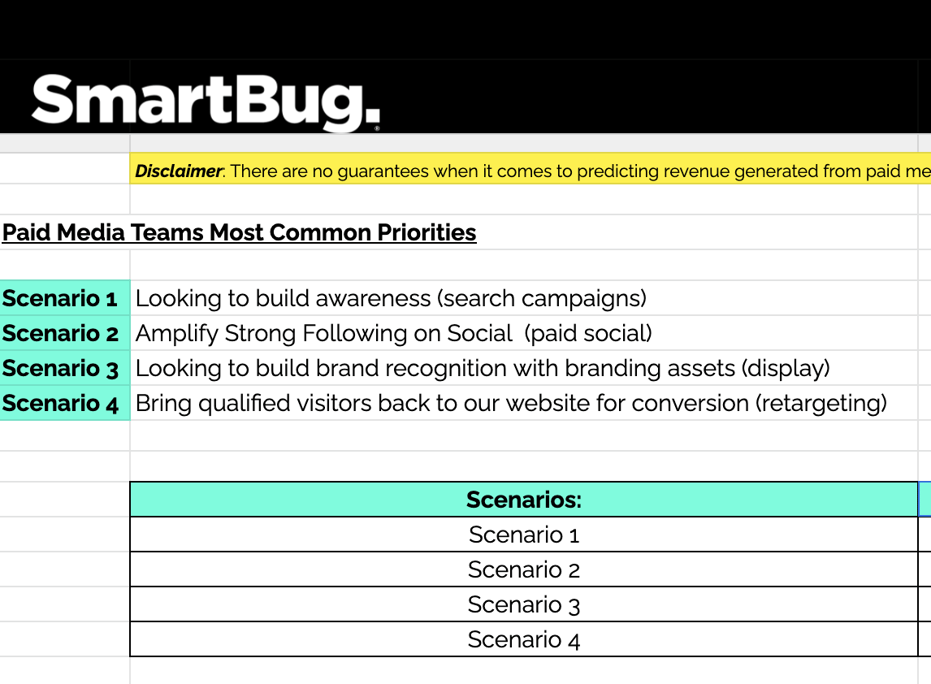
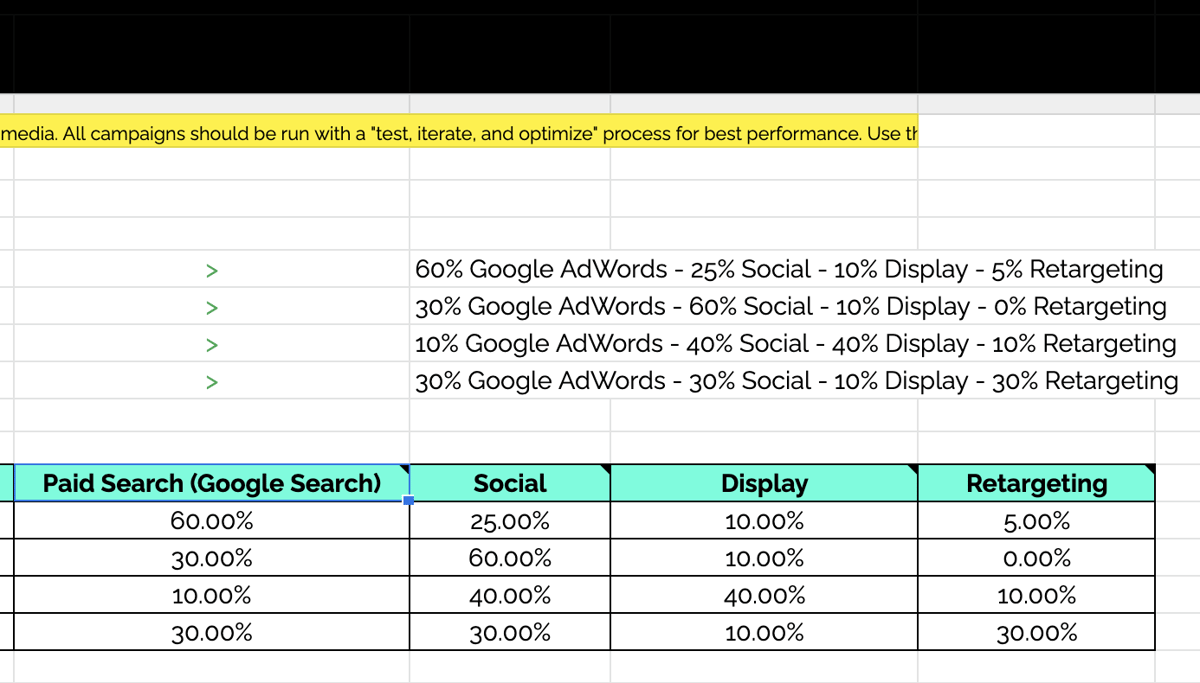
With our paid media planner and budget calculator, you’ll be able to calculate:
Your customer acquisition cost (CAC)
Your lead conversion rate
Cost per lead and cost per impression
FAQs
How do you plan paid media?
Planning paid media effectively involves several key steps:
- Understand your goals: What do you want to achieve with your paid media? This could be raising brand awareness, driving traffic to a website, or generating leads.
- Identify your target audience: You need to know who you're trying to reach. What are their demographics, interests, and online behaviors
- Choose the right channels: Depending on your target audience and goals, different channels might be more effective. For example, Facebook Ads can be great for targeting specific demographics, while Google Ads can help you reach people actively searching for your product.
- Set a budget: Determine how much you're willing to spend on your campaign, and allocate this budget across your chosen channels. Be sure to factor in the cost of creating your ads.
- Create engaging content: The content of your ads is crucial. It needs to grab attention, convey your message clearly, and inspire action.
- Measure and optimize: Once your ads are live, monitor their performance closely. Use analytics to identify which ads and channels are most effective, and optimize your campaign accordingly.
SmartBug Media’s Paid Media Calculator is a great tool to incorporate into each step of the paid media planning process.
How do you calculate ad cost?
The cost of an ad can vary significantly depending on the platform used and the bidding strategy chosen. For example, in pay-per-click (PPC) advertising on platforms like Google Ads, the cost is generally determined by factors such as your maximum bid, the quality of your ad, and the competition for the keyword you're targeting.
The basic formula is:
Ad cost = Number of impressions / 1000 x Cost Per Mille (CPM)
or
Ad cost = Number of clicks x Cost Per Click (CPC)
CPM and CPC rates can be different based on the platform, audience, industry, geographic location, and more.
How do you calculate ROAS?
Return on ad spend (ROAS) is calculated by dividing the revenue generated from ads by the cost of those ads. The formula is:
ROAS = (Revenue from Ads) / (Cost of Ads)
The result is typically expressed as a ratio. For example, a ROAS of 4:1 means that for every $1 spent on advertising, $4 is made in revenue.
How much should I spend on paid media?
The amount you should spend on paid media depends on a few factors, including your overall available marketing budget, your goals, the competition in your industry, and the results of your past campaigns. A common rule of thumb is to dedicate about 10-20 percent of your gross revenue to your overall marketing budget, and a portion of this can then be allocated to paid media.
What is a good conversion rate?
A "good" conversion rate can vary significantly depending on the industry, the type of conversion being measured (e.g., clicking on an ad versus making a purchase), and the specific platform. However, a widely accepted average for e-commerce websites is around 2-3 percent. It's important to benchmark against your own past performance and industry averages.
What is a good cost per lead?
The definition of a "good" cost per lead (CPL) varies widely depending on the industry, the value of a lead to a business, and conversion rates. A more important factor is knowing how to accurately calculate your own CPL along with other metrics such as cost per acquisition (CAC). In fact, many savvy marketers consider CAC to be far more important than CPL, because CPL is only indicative of CAC at best.
How do you calculate budget from CPM and impressions?
In media buying, CPM stands for "cost per mille," where "mille" is Latin for 1,000. It represents the cost of 1,000 impressions, or views, of an advertisement.
If you know your desired number of impressions and the CPM, you can calculate your budget using the following formula:
Budget = (Number of Impressions / 1000) x CPM
For example, if you want to achieve 500,000 impressions with a CPM of $2, your budget should be (500,000 / 1,000) x $2 = $1,000.
How do you calculate customer acquisition cost (CAC)?
Customer acquisition cost (CAC) is calculated by dividing the total costs associated with acquisition by total new customers within a specific time period. Here is the formula:
CAC = (Cost of Sales + Cost of Marketing) / Number of New Customers Acquired
This cost of sales and marketing includes all program and campaign spending, salaries, commissions and bonuses, and overhead associated with attracting and acquiring new customers.
How will you use my personal information?
We may use or disclose the personal information we collect for one or more of the following business purposes: To provide you with information, products, or services that you request from us. To provide you with email alerts, event registrations, and other notices concerning our products, services, events, and news that may be of interest to you. To carry out our obligations and enforce our rights arising from any contracts entered into between you and us, including for billing and collections. To carry out our obligations and enforce our rights arising from any contracts entered into with our clients. To improve our website and present its contents to you. For testing, research, analysis, and product development. As necessary or appropriate to protect the rights, property, or safety of us, our clients, or others. To respond to law enforcement requests and as required by applicable law, court order, or governmental regulations. As described to you when collecting your personal information or as otherwise set forth in the CCPA.
We will not collect additional categories of personal information or use the personal information we collected for materially different, unrelated, or incompatible purposes without providing you notice.
Put your paid media plan in motion.
Simply fill out this form and get access to your own paid media calculator template as a Google Sheet or Excel file.